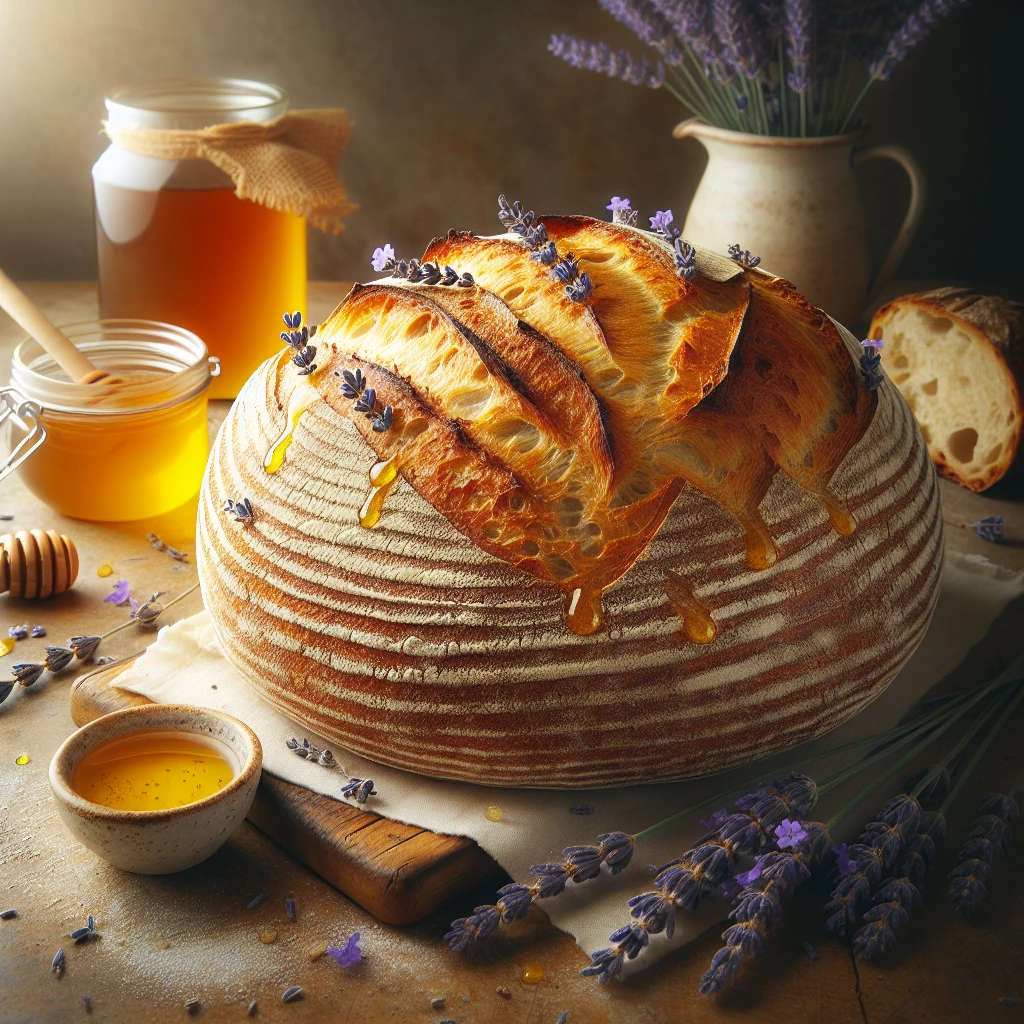
Honey Lavender Sourdough Bread is where rustic charm meets a hint of floral sweetness. This recipe combines the tang of sourdough with the delicate notes of honey and lavender, creating a loaf that's perfect for any occasion.
Sourdough starter is the heart of this bread, providing both flavor and leavening. Make sure it's active and bubbly for the best rise. Warm water helps the starter mix easily with the other ingredients, creating the perfect environment for fermentation. All-purpose flour forms the base structure of the bread, while honey adds a touch of sweetness that complements the sourdough's natural tang. Dried lavender flowers bring a gentle aromatic quality without overpowering the loaf. Salt enhances all the flavors, so don't skip it. Finally, a little olive oil contributes to a softer crumb and a more luxurious mouthfeel.
This bread pairs beautifully with creamy cheeses like goat cheese or brie. It's also fantastic as a base for open-faced sandwiches topped with smoked salmon and capers. If you’re feeling sweet, a light spread of butter and a drizzle of additional honey complement it perfectly.
Start by mixing your sourdough starter with 2 cups of warm water in a large bowl until everything is well combined. Once you've got a smooth mixture, add in 4 cups of all-purpose flour, 1 tablespoon of honey, and 1 tablespoon of dried lavender flowers. Stir this until it looks like a shaggy dough and then let it rest for 30 minutes. This rest period allows the flour to absorb the water, making it easier to work with later.
After the rest, sprinkle 2 teaspoons of salt over the dough. Using your hands, gently fold it in. It might feel a bit sticky, but that's okay. Cover the bowl with a damp cloth and let it rise at room temperature for about 4 hours. During the first 2 hours, you'll want to do stretch and folds every 30 minutes. This is just a matter of stretching the dough up and folding it over itself, which helps build the dough's strength.
Once the dough has risen and feels airy, shape it into a round loaf by pulling the edges toward the center. Place it seam side up in a banneton or a floured bowl. Cover it again and let it chill in the fridge overnight. This slow fermentation step is where the magic happens, developing deep flavors.
The next day, preheat your oven to 450°F (232°C) and place a Dutch oven inside to heat up. Carefully take your dough out of the fridge and transfer it to a parchment-lined surface. Score the top with a sharp knife. This allows the bread to expand while baking.
Using the parchment, lift the dough into the hot Dutch oven, cover it with the lid, and bake for 20 minutes. Then, remove the lid and let it bake for another 25 minutes until it's golden brown. Once done, let it cool on a wire rack to avoid a soggy bottom. Slicing too soon can ruin the texture, so patience here is key.